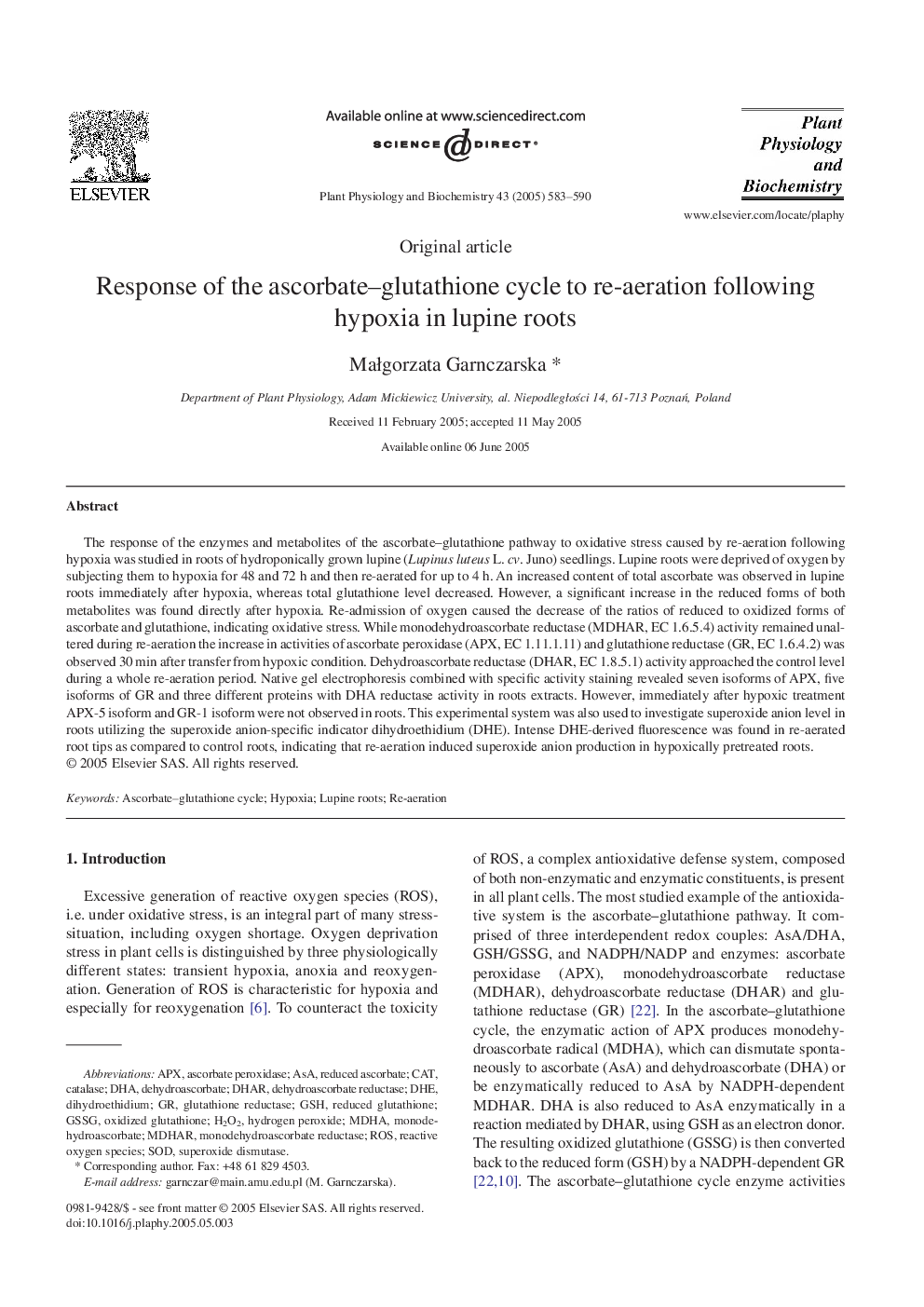| Article ID | Journal | Published Year | Pages | File Type |
|---|---|---|---|---|
| 10840132 | Plant Physiology and Biochemistry | 2005 | 8 Pages |
Abstract
The response of the enzymes and metabolites of the ascorbate-glutathione pathway to oxidative stress caused by re-aeration following hypoxia was studied in roots of hydroponically grown lupine (Lupinus luteus L. cv. Juno) seedlings. Lupine roots were deprived of oxygen by subjecting them to hypoxia for 48 and 72Â h and then re-aerated for up to 4Â h. An increased content of total ascorbate was observed in lupine roots immediately after hypoxia, whereas total glutathione level decreased. However, a significant increase in the reduced forms of both metabolites was found directly after hypoxia. Re-admission of oxygen caused the decrease of the ratios of reduced to oxidized forms of ascorbate and glutathione, indicating oxidative stress. While monodehydroascorbate reductase (MDHAR, EC 1.6.5.4) activity remained unaltered during re-aeration the increase in activities of ascorbate peroxidase (APX, EC 1.11.1.11) and glutathione reductase (GR, EC 1.6.4.2) was observed 30Â min after transfer from hypoxic condition. Dehydroascorbate reductase (DHAR, EC 1.8.5.1) activity approached the control level during a whole re-aeration period. Native gel electrophoresis combined with specific activity staining revealed seven isoforms of APX, five isoforms of GR and three different proteins with DHA reductase activity in roots extracts. However, immediately after hypoxic treatment APX-5 isoform and GR-1 isoform were not observed in roots. This experimental system was also used to investigate superoxide anion level in roots utilizing the superoxide anion-specific indicator dihydroethidium (DHE). Intense DHE-derived fluorescence was found in re-aerated root tips as compared to control roots, indicating that re-aeration induced superoxide anion production in hypoxically pretreated roots.
Keywords
monodehydroascorbatemonodehydroascorbate reductasedehydroascorbateGSSGMDHARASAdehydroascorbate reductaseDHARCATAPXGSHROSHydrogen peroxidereduced ascorbateMdhaDHAdihydroethidiumSODSuperoxide dismutaseH2O2HypoxiaDHEascorbate peroxidaseAscorbate–glutathione cycleCatalasereduced glutathioneoxidized glutathioneglutathione reductaseReactive oxygen species
Related Topics
Life Sciences
Agricultural and Biological Sciences
Plant Science
Authors
MaÅgorzata Garnczarska,
